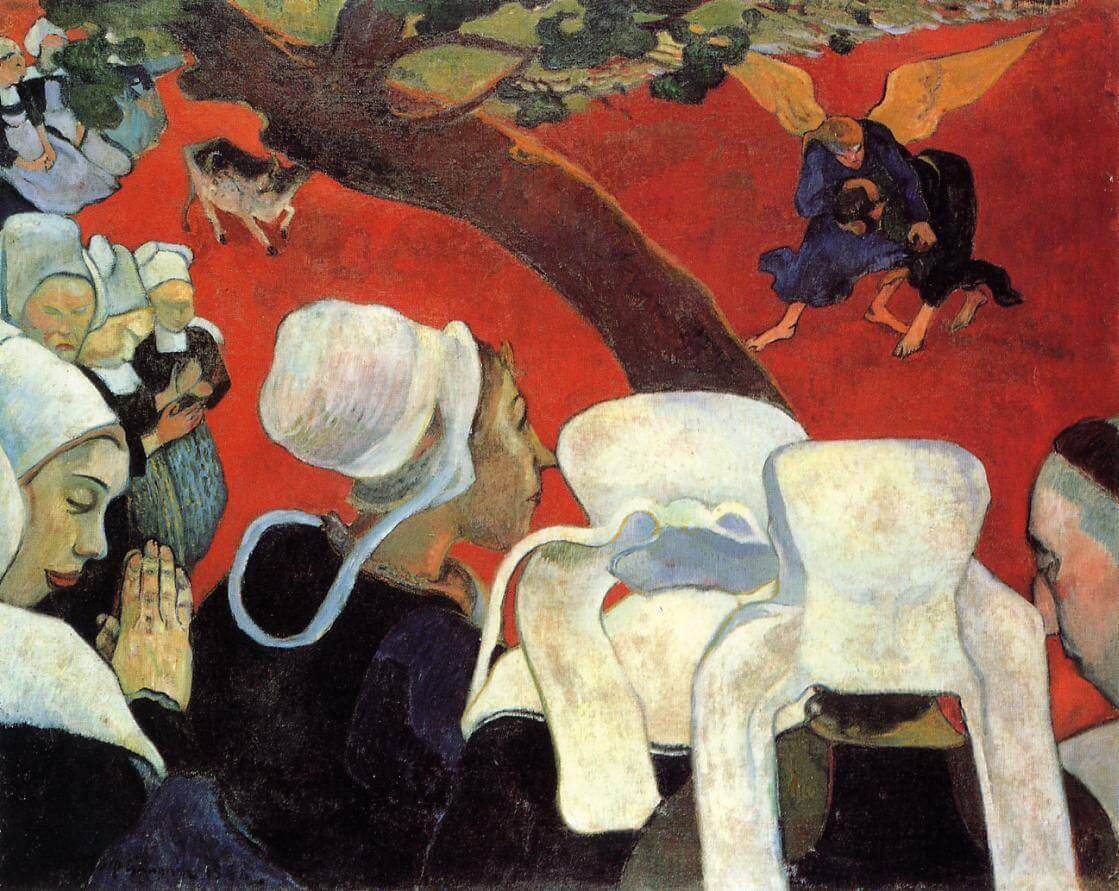
Paul Gauguin. Genius, not waiting for fame
Contents:
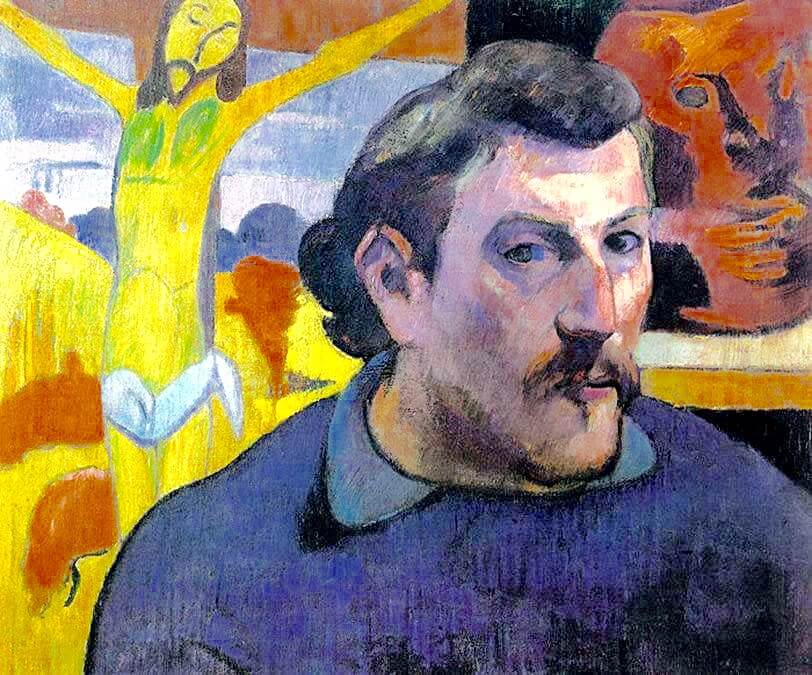
Paul Gauguin can be reproached for many things - betrayal of the official wife, irresponsible attitude towards children, cohabitation with minors, blasphemy, extreme selfishness.
But what does this mean in comparison with the greatest talent that fate has awarded him?
Gauguin is full of contradiction, insoluble conflict and life, like an adventure drama. And Gauguin is a whole layer of world art and hundreds of paintings. And a completely new aesthetic that still surprises and delights.
Life is ordinary
Paul Gauguin was born on June 7, 1848 into a very distinguished family. The mother of the future artist was the daughter of a famous writer. Father is a political journalist.
At 23, Gauguin finds a good job. He becomes a successful stockbroker. But in the evenings and on weekends he paints.
At 25, he marries Dutch Mette Sophie Gad. But their union is not a story about great love and the place of honor of the muse of the great master. For Gauguin felt sincere love only for art. Which the wife did not share.
If Gauguin portrayed his wife, it was rare and rather specific. For example, against the background of a gray-brown wall, turned away from the viewer.
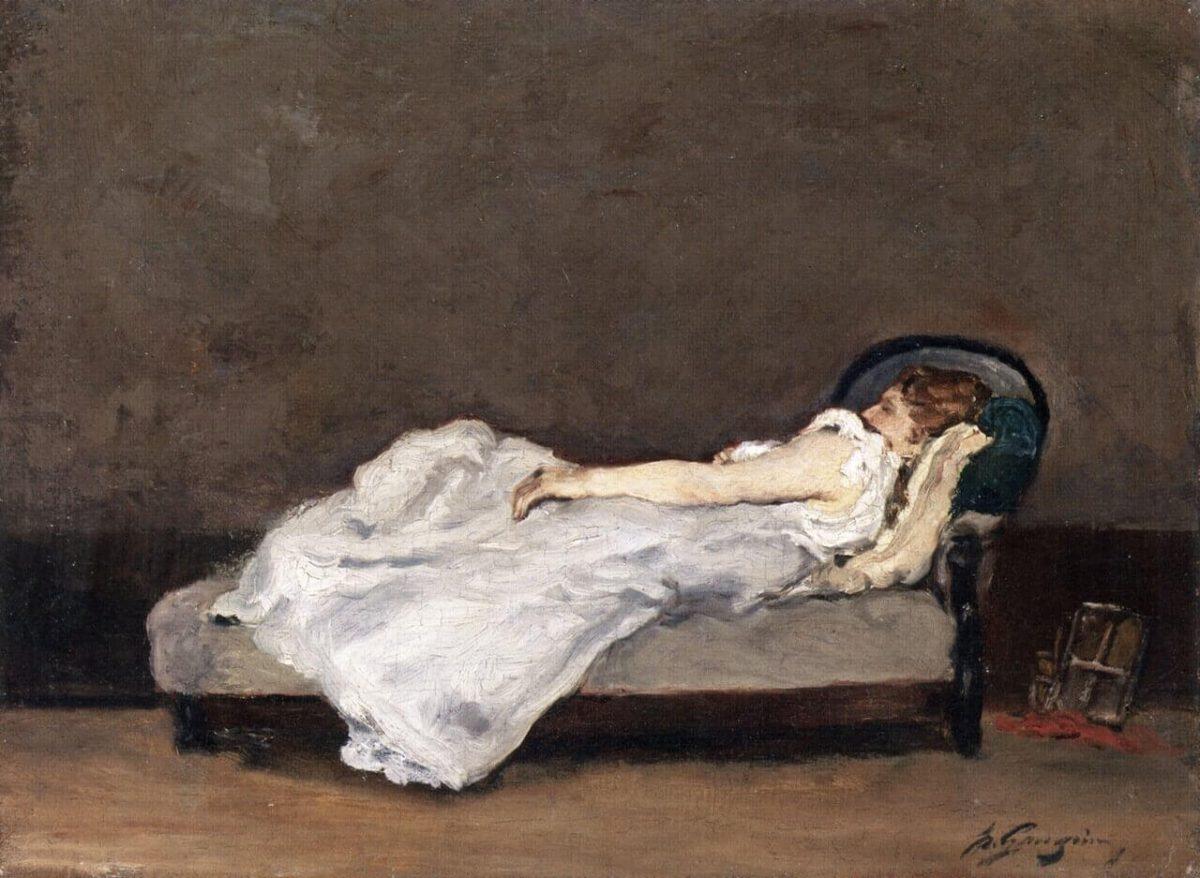
However, the spouses will give birth to five children, and, perhaps, apart from them, nothing will connect them soon. Mette considered her husband's painting classes a waste of time. She married a wealthy broker. And I wanted to lead a comfortable life.
Therefore, the decision once made by her husband to quit his job and engage only in painting for Mette was a severe blow. Their union, of course, will not stand such a test.
The Beginning of Art
The first 10 years of the marriage of Paul and Mette passed quietly and safely. Gauguin was only an amateur in painting. And he painted only in his free time from the stock exchange.
Most of all, Gauguin was seduced impressionists. Here is one of Gauguin's works, painted with typical Impressionist light reflections and a pretty corner of the countryside.
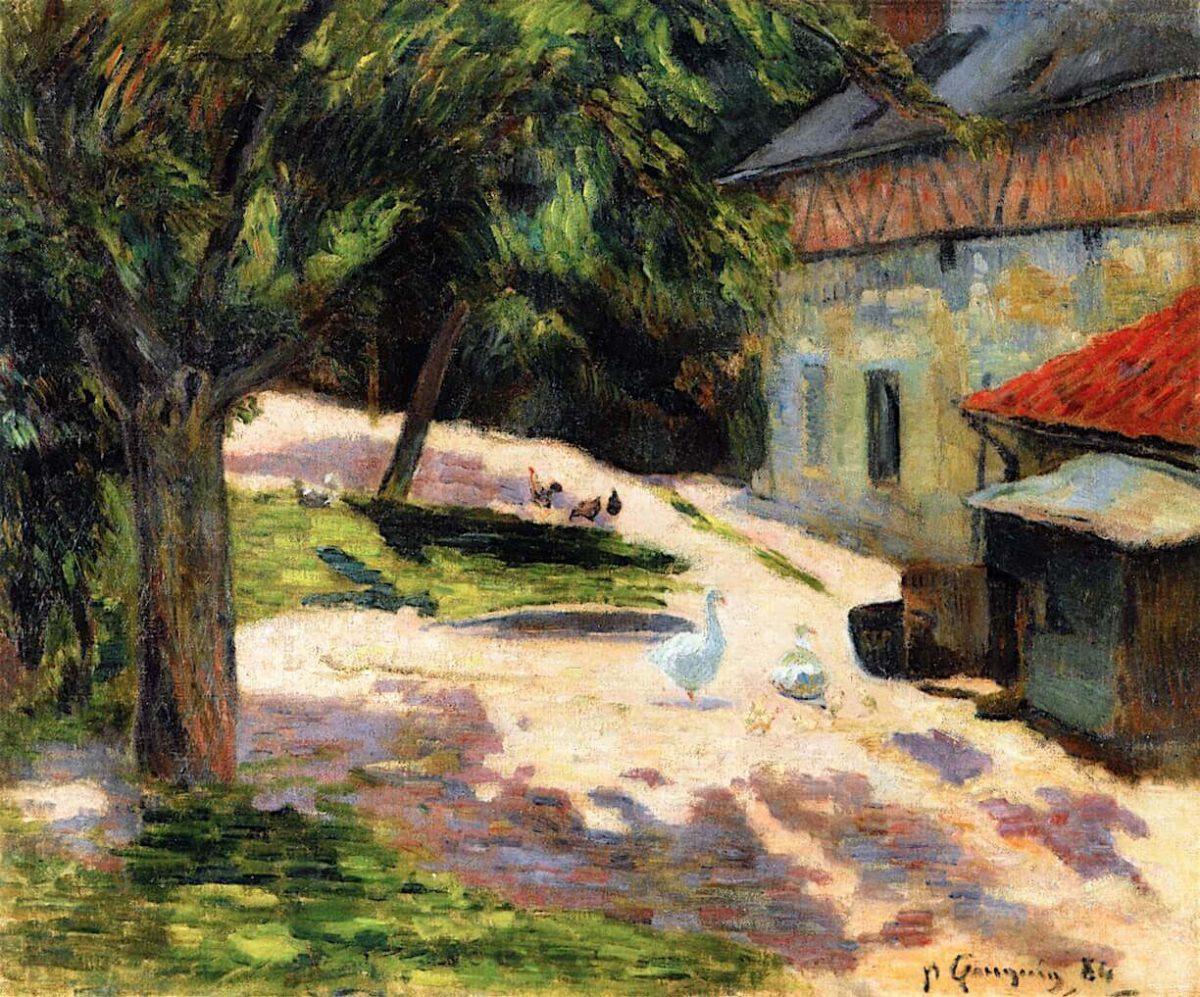
Gauguin actively communicates with such outstanding painters of his time as Cezanne, Pissarro, Degas.
Their influence is felt in the early works of Gauguin. For example, in the painting “Suzanne Sewing”.
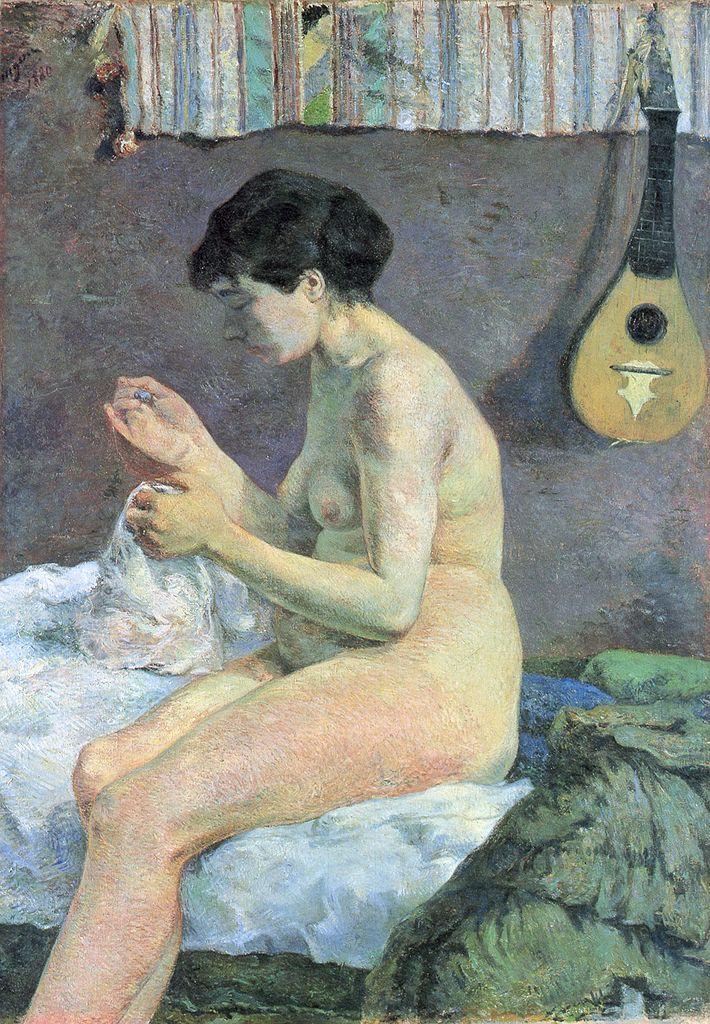
The girl is busy with her work, and we seem to be spying on her. Quite in the spirit of Degas.
Gauguin does not seek to embellish it. She hunched over, which made her posture and stomach unattractive. The skin is “ruthlessly” conveyed not only in beige and pink, but also in blue and green. And this is quite in the spirit of Cezanne.
And some serenity and peace are clearly taken from Pissarro.
1883, when Gauguin turns 35, becomes a turning point in his biography. He left his job at the stock exchange, confident that he would quickly become famous as a painter.
But the hopes were not justified. The accumulated money quickly ran out. Wife Mette, not wanting to live in poverty, leaves for her parents, taking the children. This meant the collapse of their family union.
Gauguin in Brittany
Summer 1886 Gauguin spends in Brittany in northern France.
It was here that Gauguin developed his own individual style. Which will change little. And by which he is so recognizable.
The simplicity of the drawing, bordering on the caricature. Large areas of the same color. Bright colors, especially a lot of yellow, blue, red. Unrealistic color schemes, when the earth could be red and the trees blue. And also mystery and mysticism.
We see all this in one of the main masterpieces of Gauguin of the Breton period - "Vision after the sermon or Jacob's struggle with the Angel."
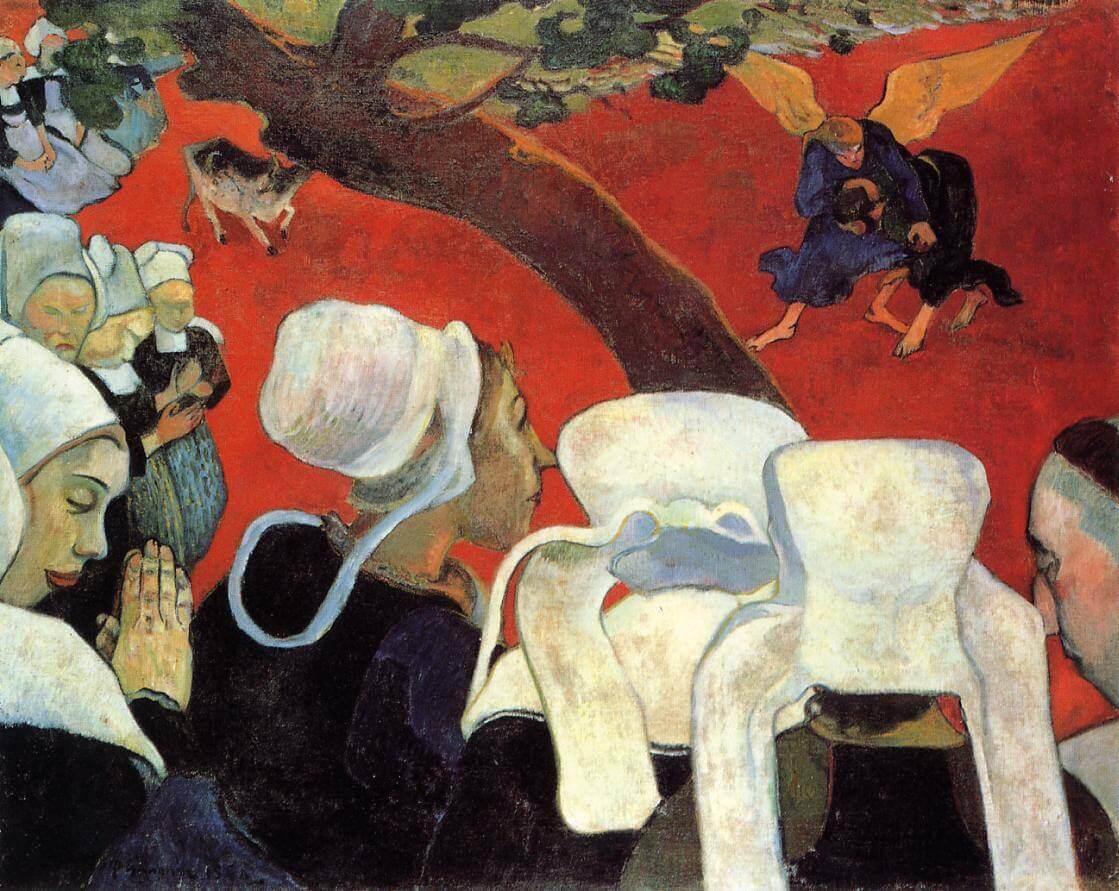
The real meets the fantastic. Breton women in characteristic white caps see a scene from the Book of Genesis. How Jacob wrestles with an angel.
Someone is watching (including a cow), someone is praying. And all this against the backdrop of red earth. As if it is happening in the tropics, oversaturated with bright colors. One day Gauguin will leave for the real tropics. Is it because its colors are more appropriate there?
Another masterpiece was created in Brittany - "Yellow Christ". It is this picture that is the background to his self-portrait (at the beginning of the article).
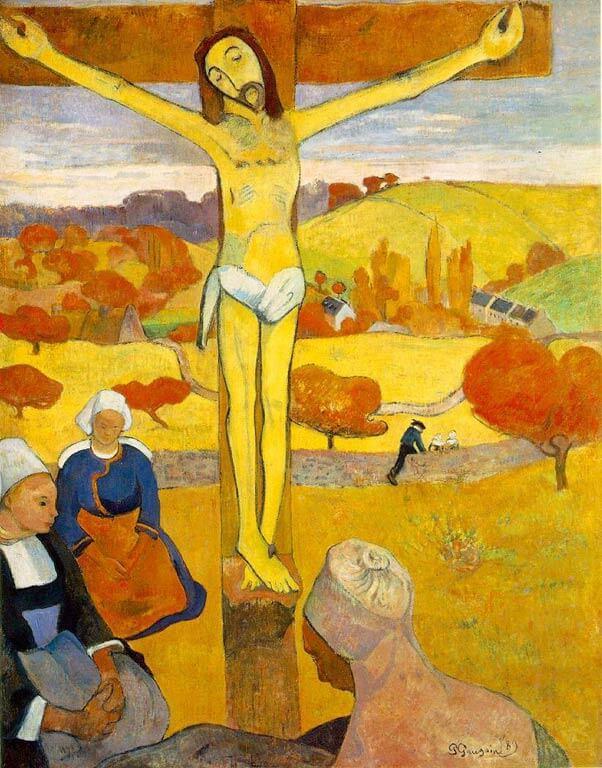
Already from these paintings, created in Brittany, one can see a significant difference between Gauguin and the Impressionists. Impressionists depicted their visual sensations without introducing any hidden meaning.
But for Gauguin, allegory was important. No wonder he is considered the founder of symbolism in painting.
See how calm and even indifferent the Bretons sitting around the crucified Christ. So Gauguin shows that the sacrifice of Christ has long been forgotten. And religion for many has become just a set of obligatory rituals.
Why did the artist depict himself against the background of his own painting with the yellow Christ? For this, many believers did not like him. Considering such “gestures” as blasphemy. Gauguin considered himself a victim of the tastes of the public, which does not accept his work. Frankly comparing their suffering with the martyrdom of Christ.
And the public really had a hard time understanding him. In Brittany, the mayor of a small town commissioned a portrait of his wife. This is how “Beautiful Angela” was born.
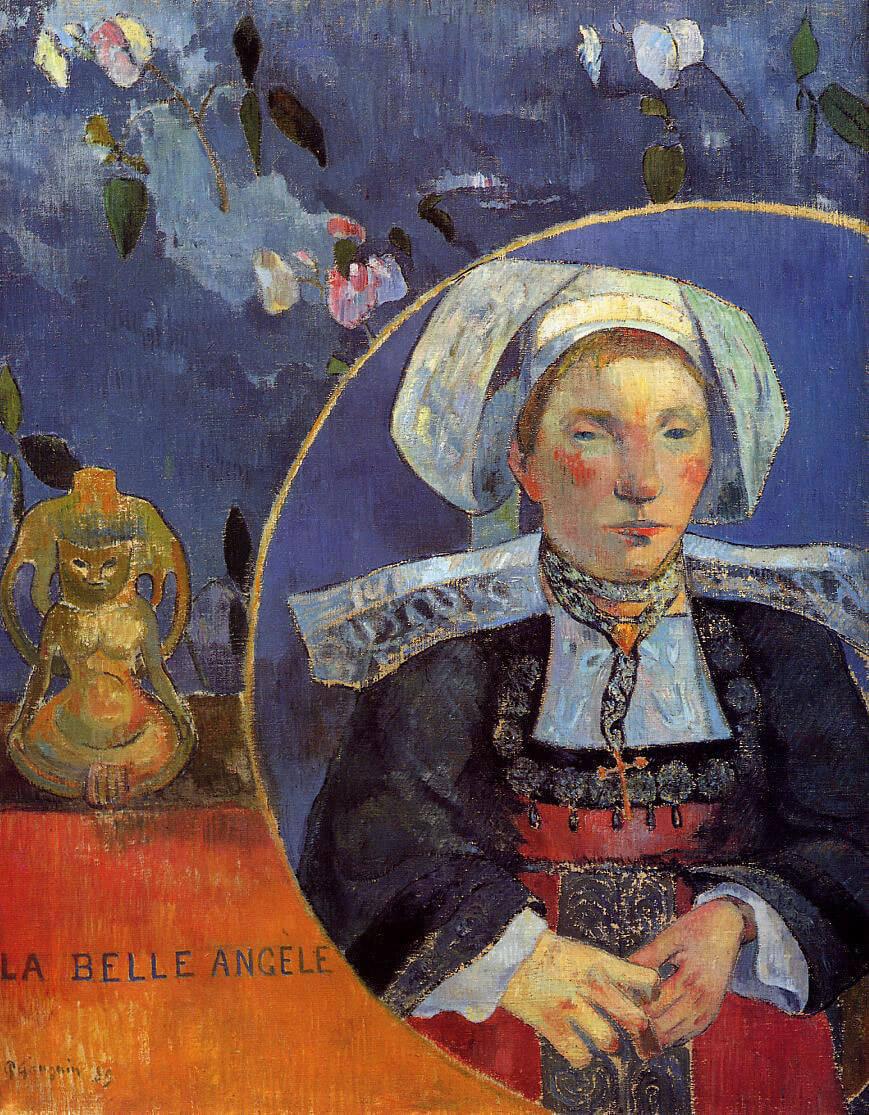
The real Angela was shocked. She could not even imagine that she would be so “beautiful”. Narrow piggy eyes. Swollen nose. Huge bony hands.
And next to it is an exotic figurine. Which the girl regarded as a parody of her husband. After all, he was shorter than her height. It is surprising that the customers did not tear the canvas to pieces in a fit of anger.
Gauguin in Arles
It is clear that the case with the “Beautiful Angela” did not add customers to Gauguin. Poverty forces him to agree to the proposal Van Gogh about working together. He went to see him in Arles, south of France. Hoping that life together will be easier.
Here they write the same people, the same places. Like, for example, Madame Gidoux, the owner of a local cafe. Although the style is different. I think you can easily guess (if you haven't seen these pictures before) where Gauguin's hand is, and where is Van Gogh's.
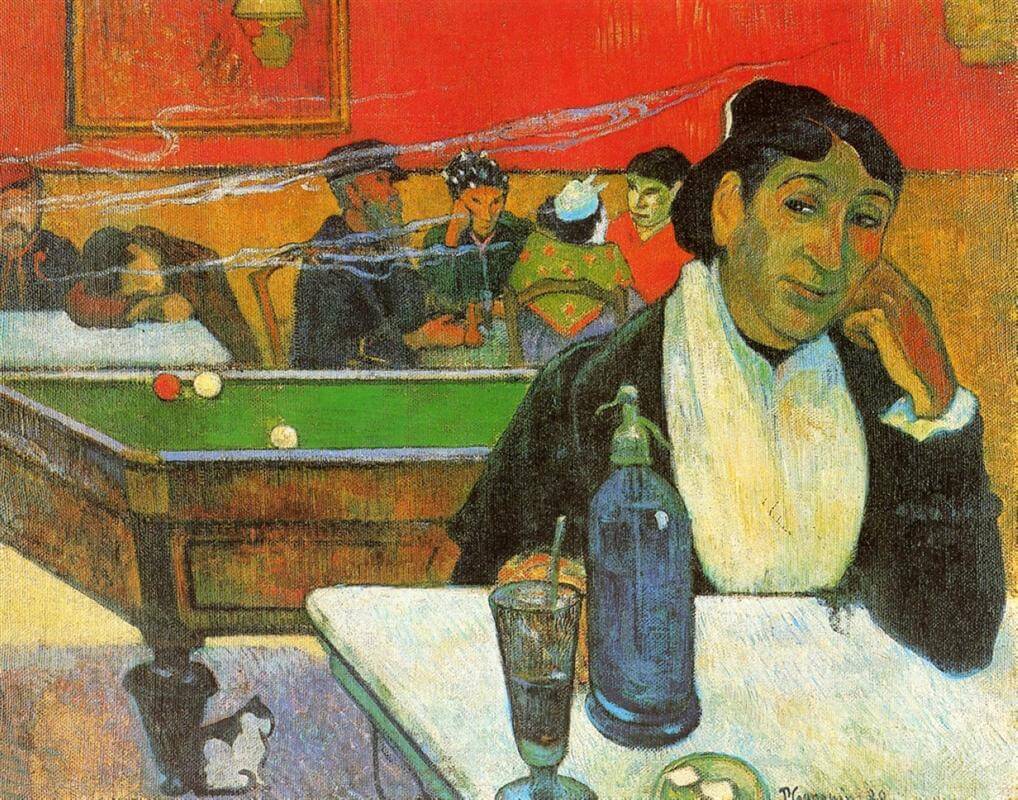
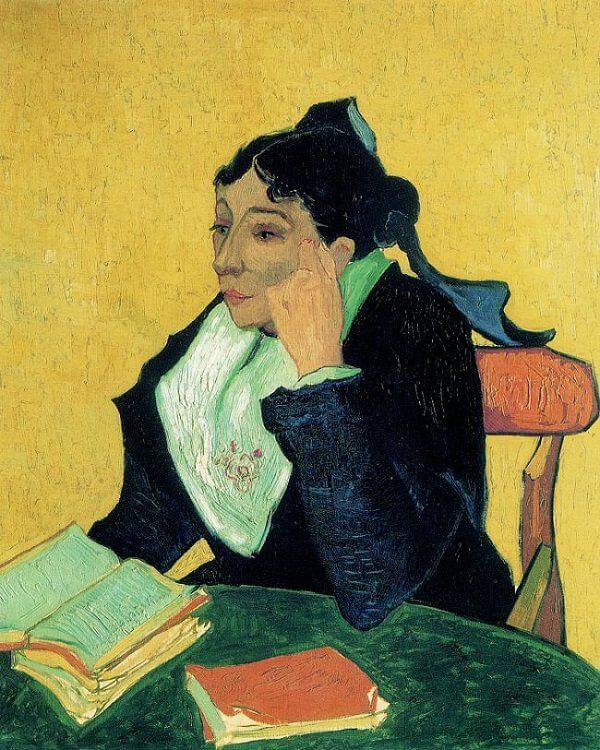
Information about the paintings at the end of the article *
But the imperious, self-confident Paul and the nervous, quick-tempered Vincent could not get along under the same roof. And once, in the heat of a quarrel, Van Gogh almost killed Gauguin.
The friendship was over. And Van Gogh, tormented by remorse, cut off his earlobe.
Gauguin in the tropics
In the early 1890s, the artist was seized by a new idea - to organize a workshop in the tropics. He decided to settle in Tahiti.
Life on the islands was not as rosy as it seemed to Gauguin at first. The natives accepted him coldly, and there was little “untouched culture” left - the colonists had long brought civilization to these wild places.
Locals rarely agreed to pose for Gauguin. And if they came to his hut, they preened themselves in a European way.
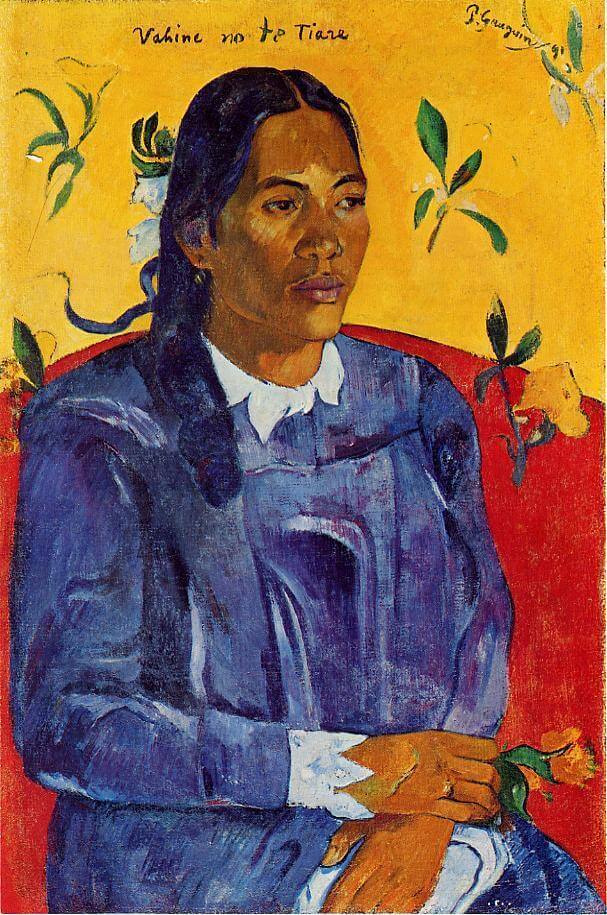
Throughout his life in French Polynesia, Gauguin would search for a "pure" native culture, settling as far as possible from the towns and villages equipped by the French.
outlandish art
Undoubtedly, Gauguin opened a new aesthetics in painting for Europeans. With each ship, he sent his paintings to the "mainland".
Canvases depicting naked dark-skinned beauties in a primitive entourage aroused great interest among the European audience.
Read more about the painting in the article “7 masterpieces of the Pushkin Museum worth seeing”.
site “Diary of painting. In each picture there is a story, a fate, a mystery.”
» data-medium-file=»https://i0.wp.com/www.arts-dnevnik.ru/wp-content/uploads/2016/07/image-16.jpeg?fit=595%2C444&ssl=1″ data-large-file=”https://i0.wp.com/www.arts-dnevnik.ru/wp-content/uploads/2016/07/image-16.jpeg?fit=900%2C672&ssl=1″ loading =”lazy” class=”wp-image-2781 size-full” title=”Paul Gauguin. A genius who never saw fame “Are you jealous?” src=”https://i1.wp.com/arts-dnevnik.ru/wp-content/uploads/2016/07/image-16.jpeg?resize= 900%2C672″ alt=”Paul Gauguin. A genius who never saw fame” width=”900″ height=”672″ sizes=”(max-width: 900px) 100vw, 900px” data-recalc-dims=”1″/>
Gauguin scrupulously studied the local culture, rituals, mythology. So, in the painting “The Loss of Virginity”, Gauguin allegorically illustrates the pre-wedding custom of the Tahitians.
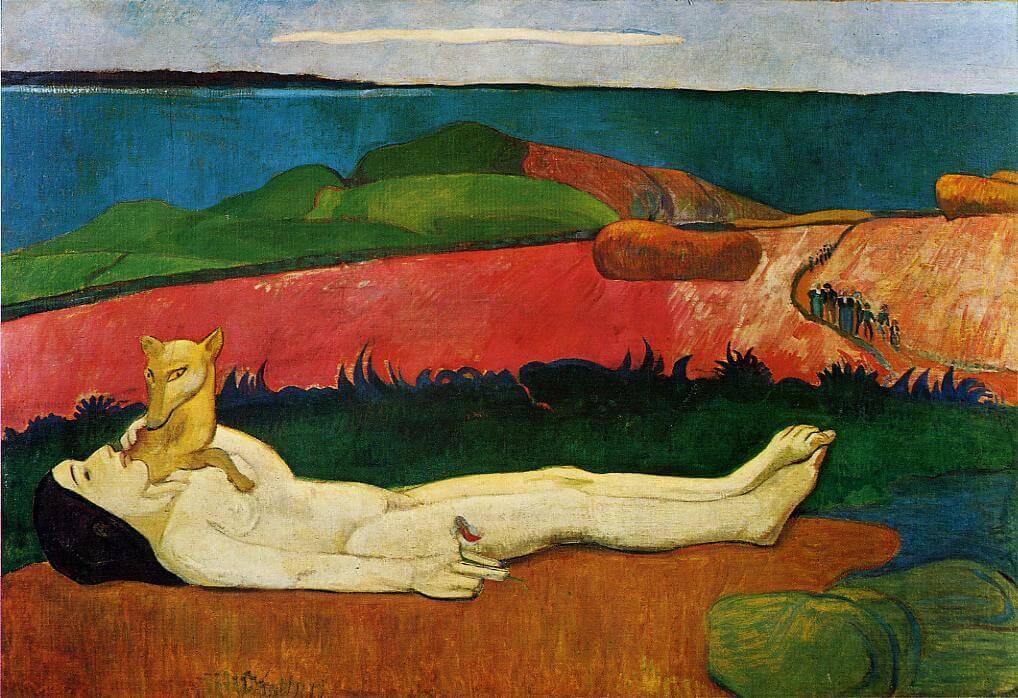
The bride on the eve of the wedding was stolen by the groom's friends. They "helped" him make the girl a woman. That is, in fact, the first wedding night belonged to them.
True, this custom had already been eradicated by the missionaries by the time Gauguin arrived. The artist learned about him from the stories of local residents.
Gauguin also liked to philosophize. This is how his famous painting “Where did we come from? Who are we? Where are we going?".
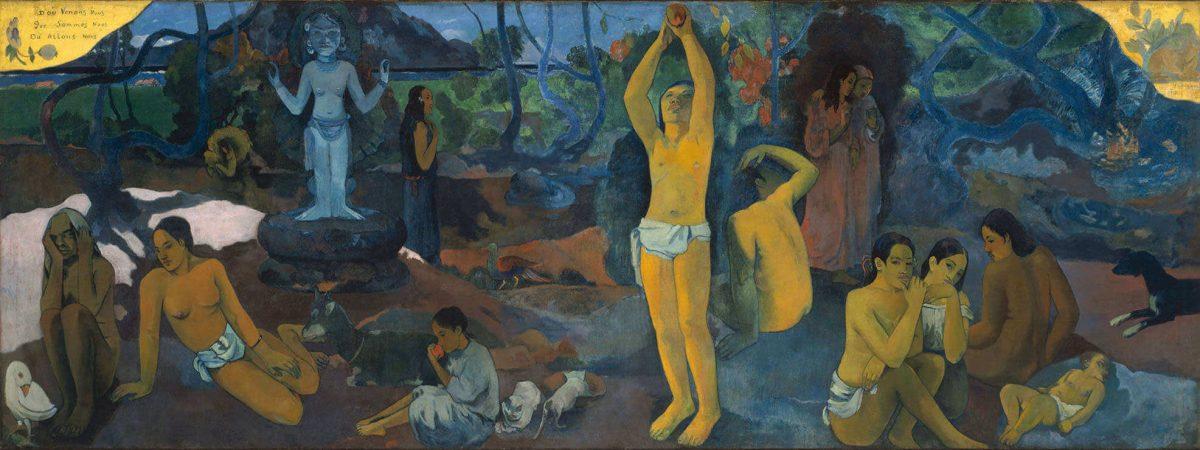
Gauguin's private life in the tropics
There are many legends about Gauguin's personal life on the island.
They say that the artist was very promiscuous in his relations with the local mulattos. He suffered from numerous venereal diseases. But history has preserved the name of some beloved ones.
The most famous attachment was 13-year-old Tehura. A young girl can be seen in the painting “The Spirit of the Dead Does Not Sleep”.
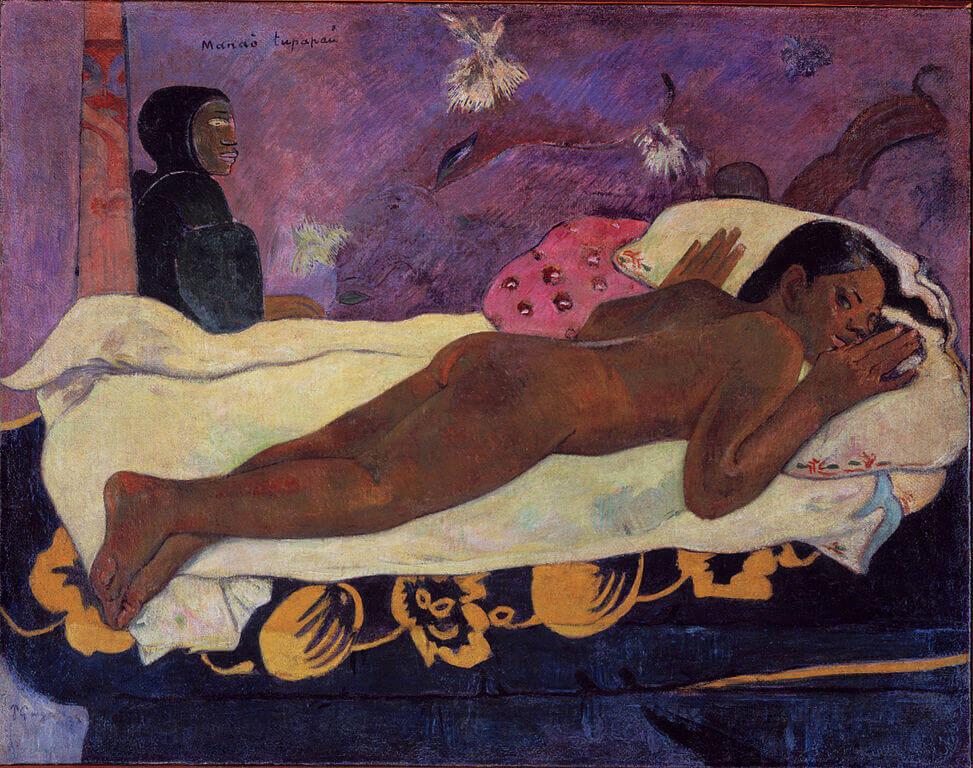
Gauguin left her pregnant, leaving for France. From this connection, the boy Emil was born. He was brought up by a local man whom Tehura married. It is known that Emil lived to be 80 years old and died in poverty.

Recognition immediately after death
Gauguin never had time to enjoy success.
Numerous illnesses, difficult relationships with missionaries, lack of money - all this undermined the strength of the painter. On May 8, 1903, Gauguin died.
Here is one of his latest paintings, The Spell. In which the mixture of native and colonial is especially noticeable. The spell and the cross. Nude and dressed in deaf clothes.
And a thin coat of paint. Gauguin had to save money. If you have seen the work of Gauguin live, then you probably paid attention to this.
As a mockery of the poor painter, events develop after his death. Dealer Vollard organizes a grandiose exhibition of Gauguin. Salon** dedicates a whole room to him...
But Gauguin is not destined to bathe in this grandiose glory. He did not live up to her just a little bit ...
However, the painter's art turned out to be immortal - his paintings still amaze with their stubborn lines, exotic coloring and unique style.
Gauguin in Russia
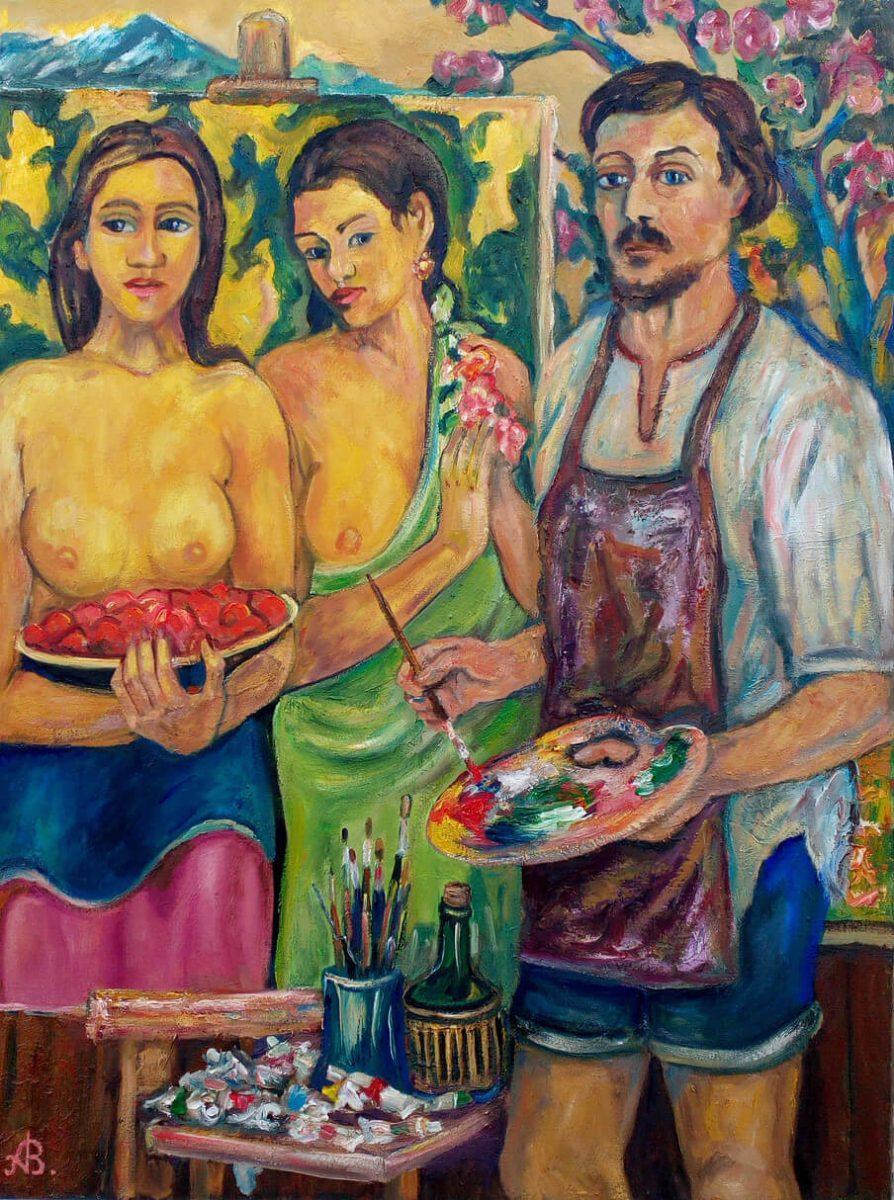
There are many works by Gauguin in Russia. All thanks to pre-revolutionary collectors Ivan Morozov and Sergei Shchukin. They brought home a lot of paintings by the master.
One of the main masterpieces of Gauguin "Girl holding a fruit" is stored in Hermitage in St. Petersburg.
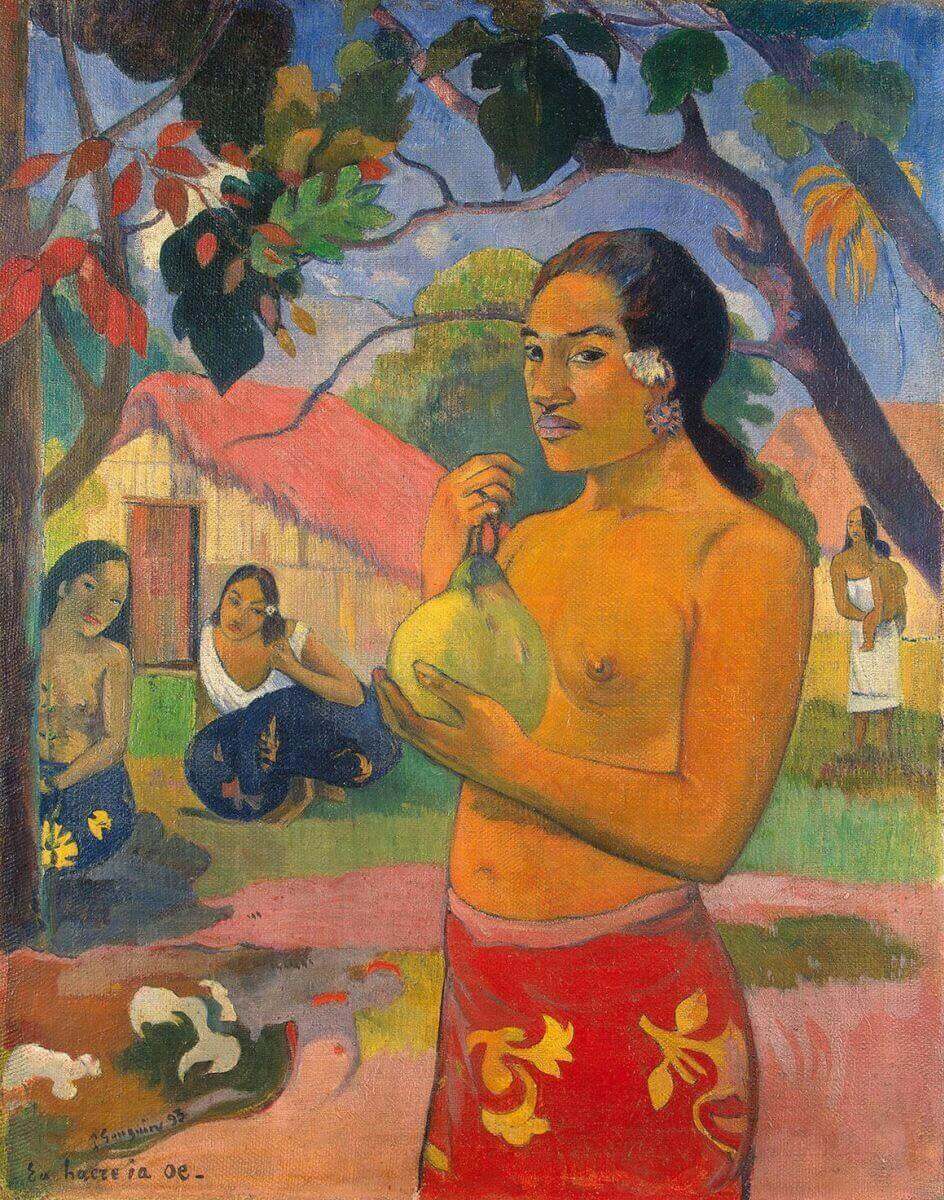
Read also about the artist's masterpiece "White horse".
* Left: Paul Gauguin. In the night cafe. 1888 Pushkin Museum im. A.S. Pushkin, Moscow. Right: Van Gogh. Arlesian. 1889
** An organization in Paris that exhibited the work of officially recognized artists to the general public.
***
Comments other readers see below. They are often a good addition to an article. You can also share your opinion about the painting and the artist, as well as ask the author a question.
Main illustration: Paul Gauguin. Self-portrait with the yellow Christ. 1890 Museum d'Orsay.
Leave a Reply